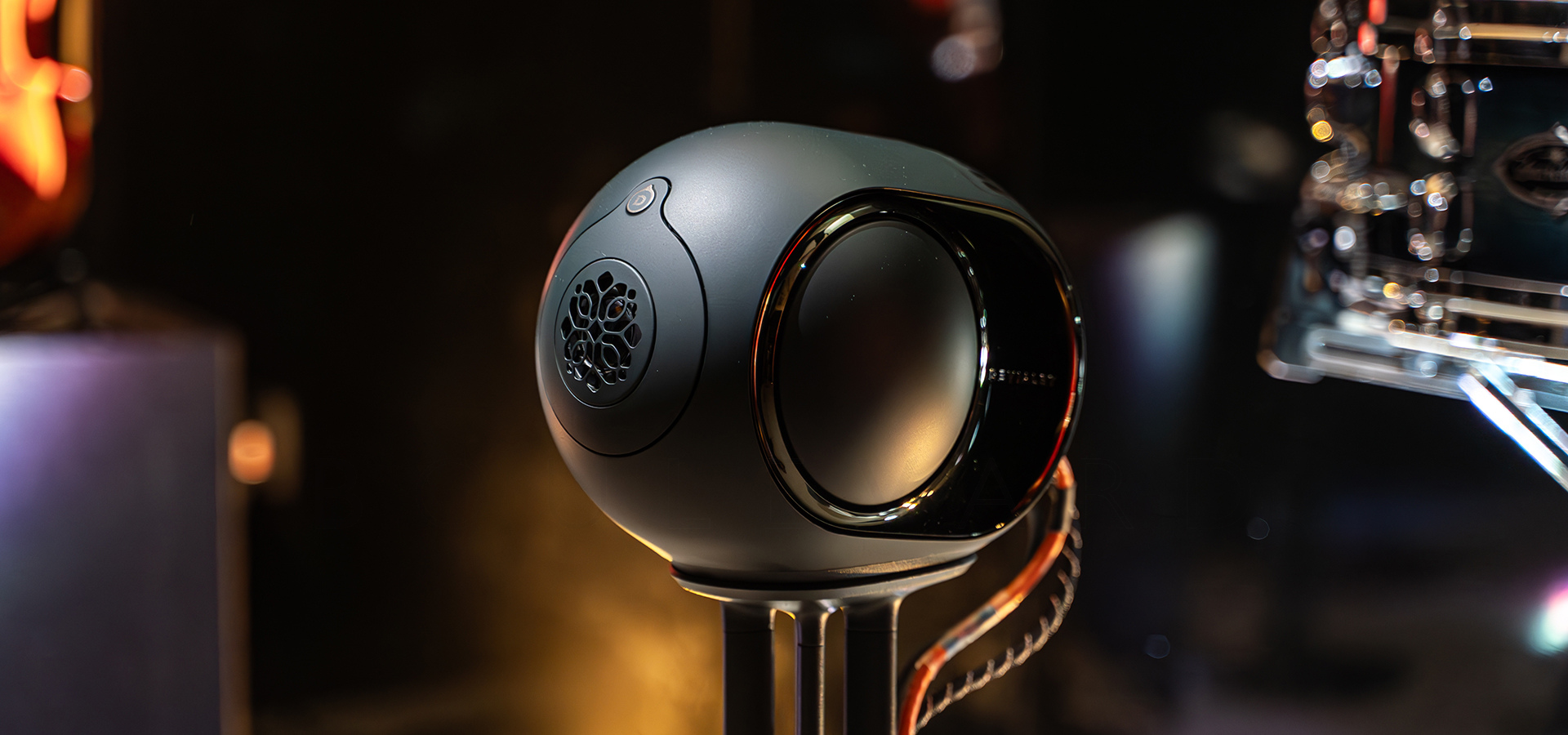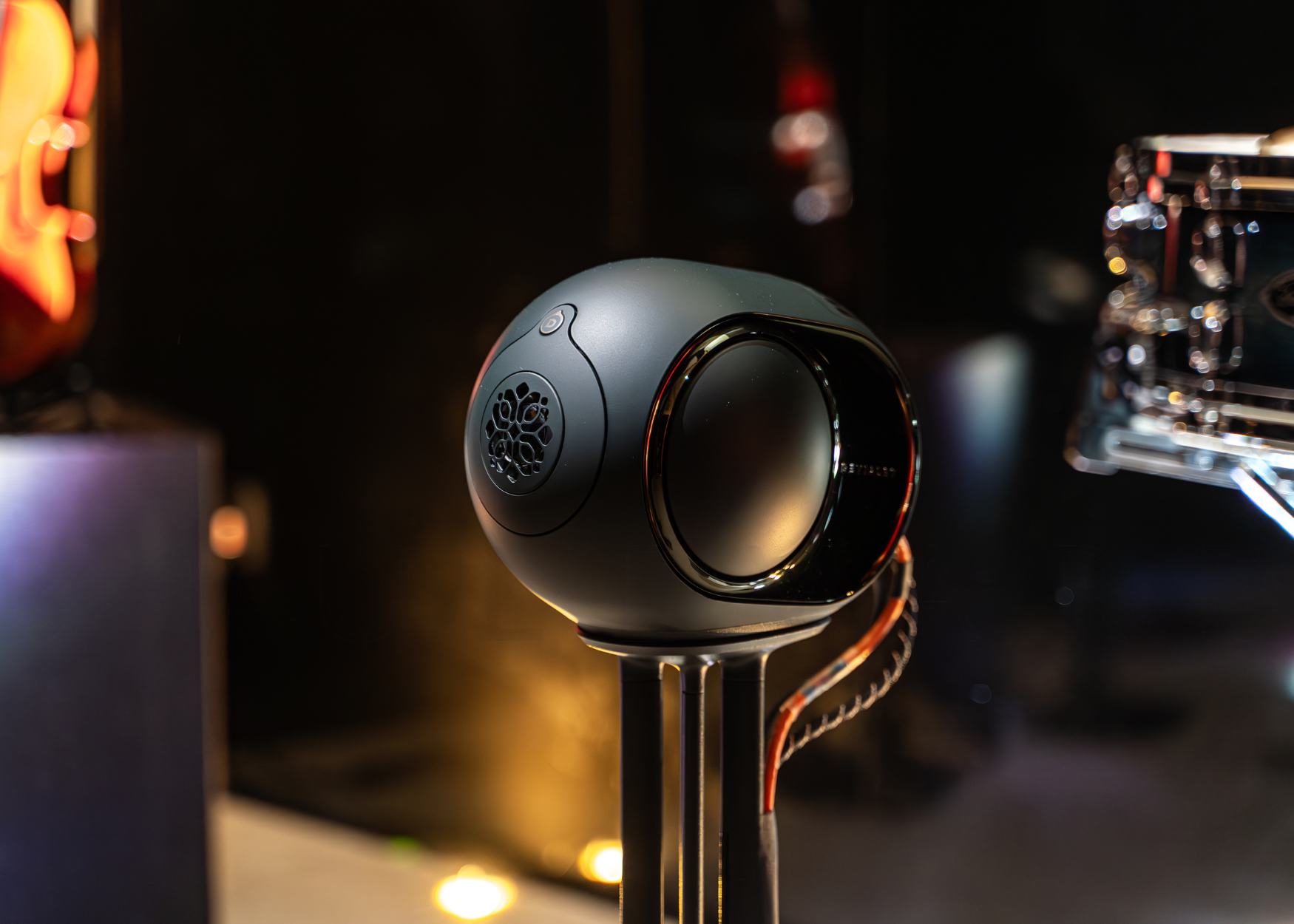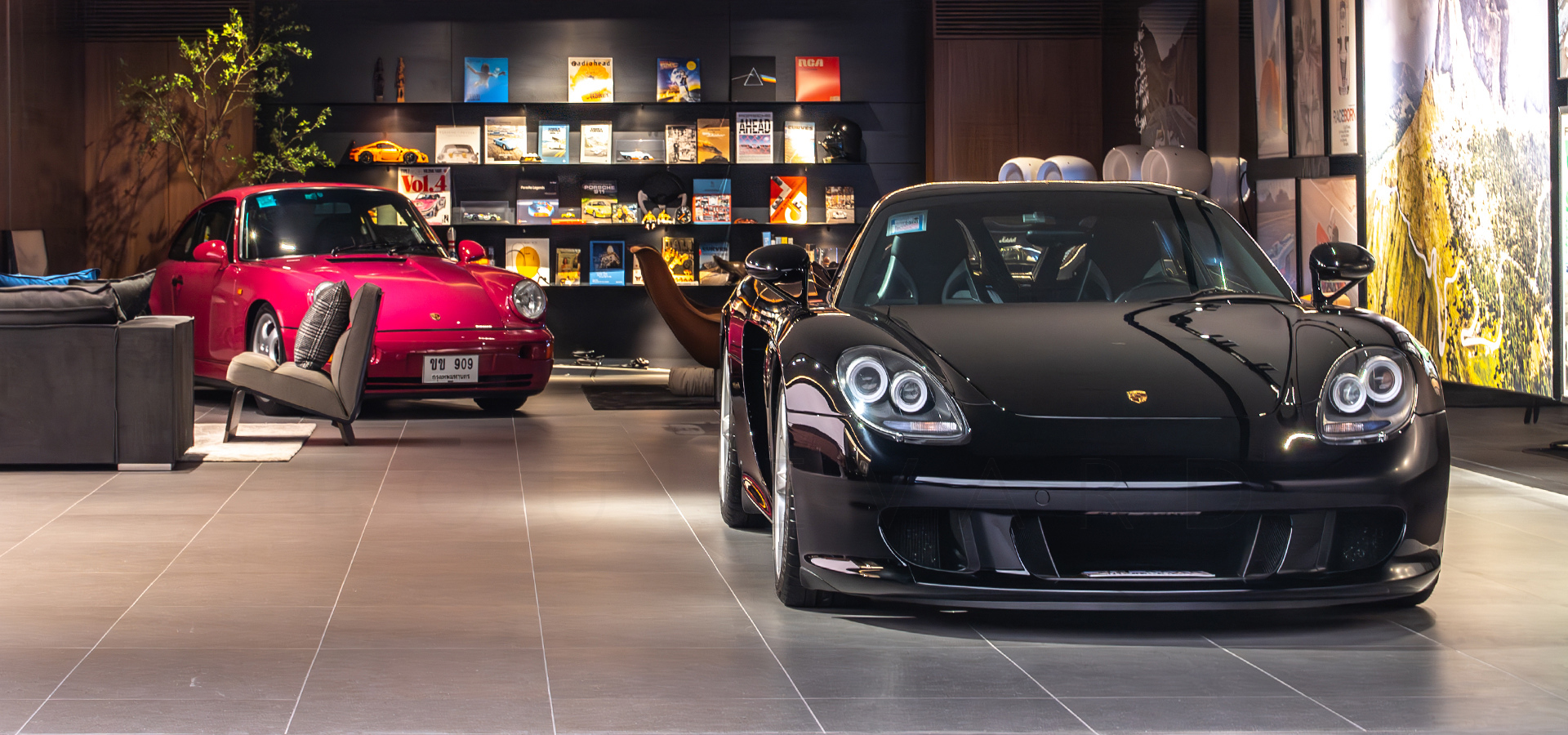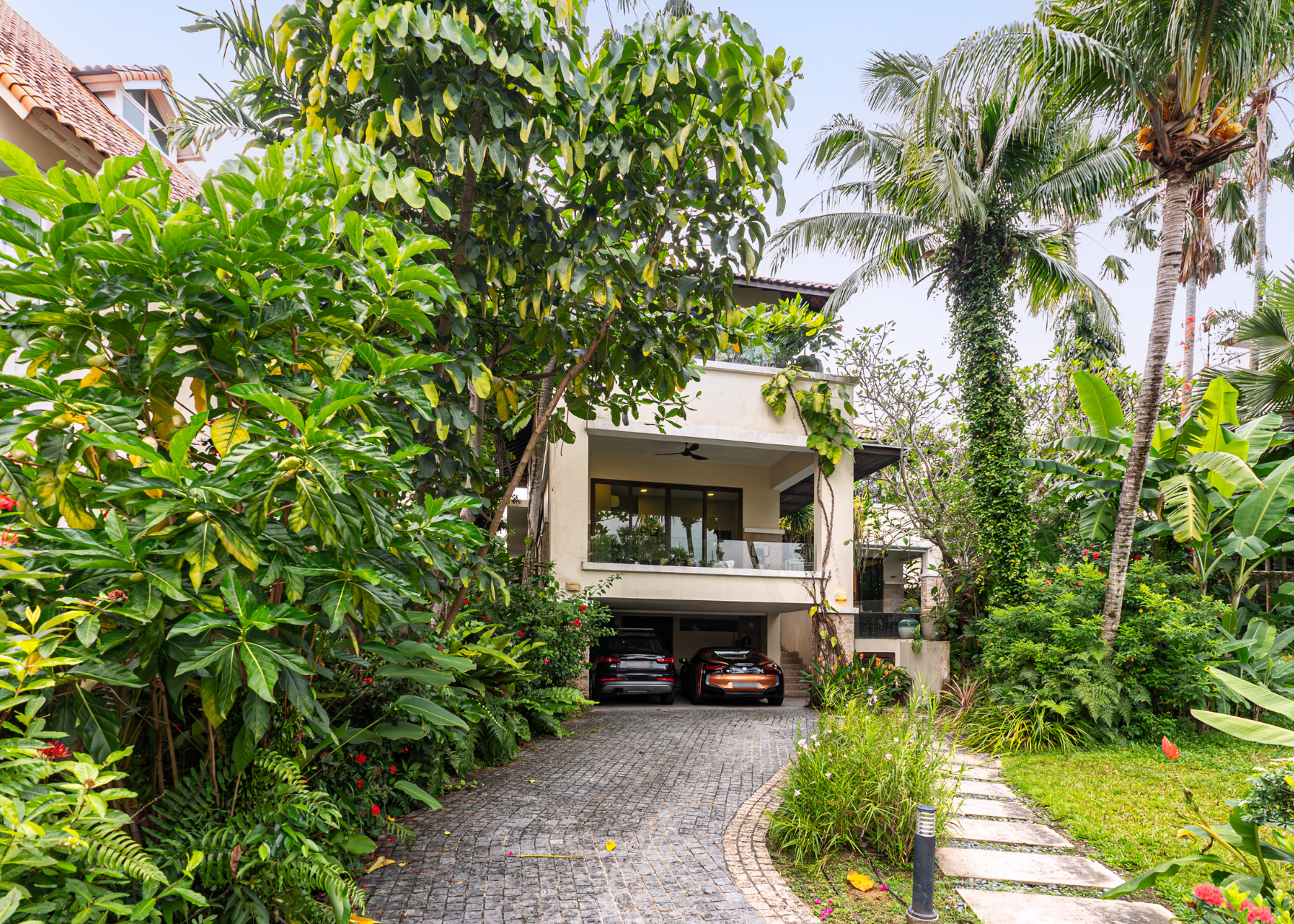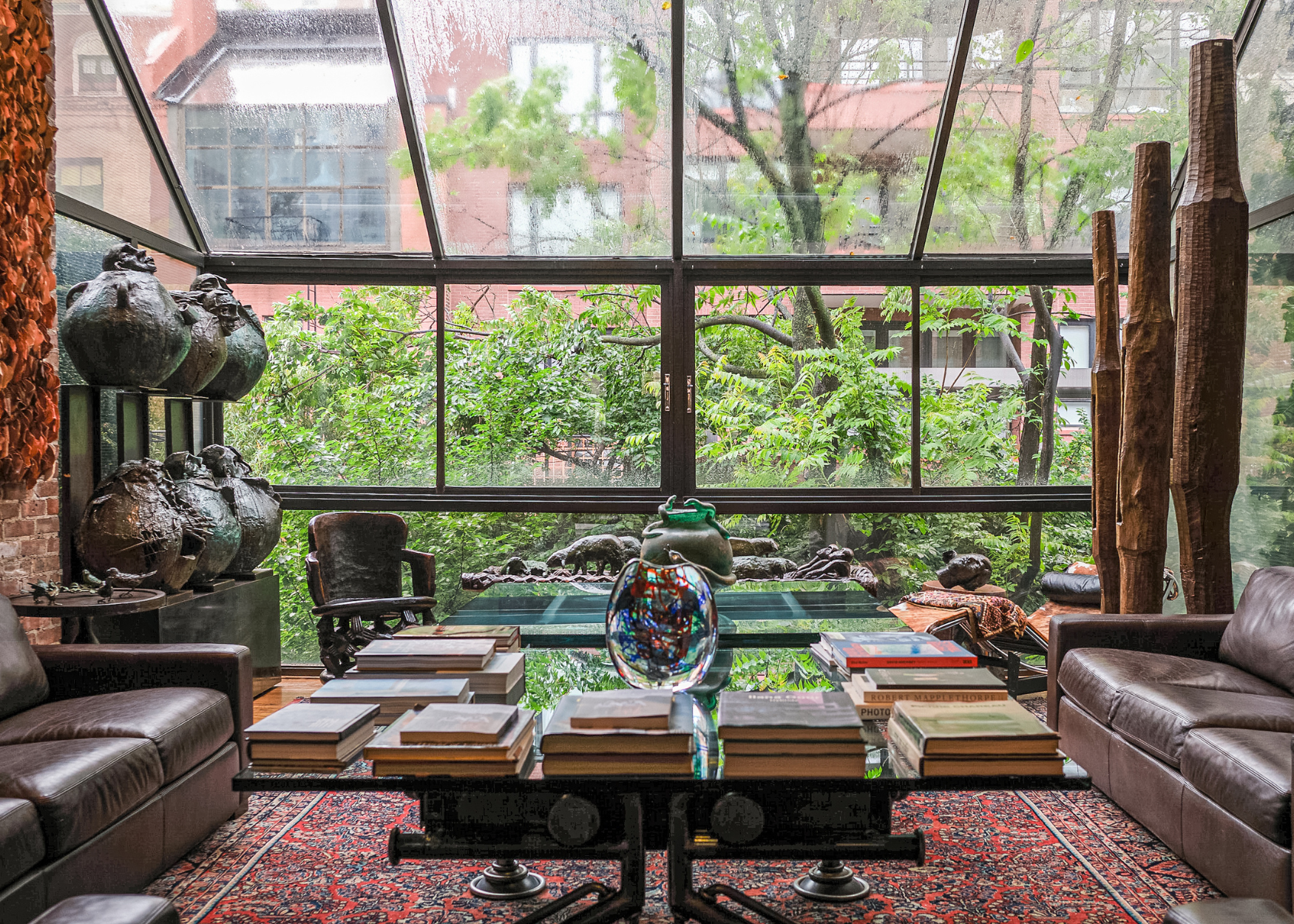The Phantom Ultimate embodies Devialet’s ability to make the impossible possible, transforming sound into emotion
by Karishma Tulsidas
Photography by Jin Cheng Wong
Shot on location at the Devialet showroom in Marina Bay Sands, Singapore.
The first time I experienced the Devialet Phantom was about a decade ago, ensconced in the sound room of its Marina Bay Sands boutique. Ten years on, I can still feel the physicality of that moment—the way the music didn’t just fill the room, but infused every cell of my body. It wasn’t just an audio experience. It was visceral, emotional—almost spiritual.
For Jean-Loup Afresne, Chief Product & Technical Officer at Devialet, emotion isn’t an afterthought: it’s the essence of Devialet itself and continues to imbue its creative process.
The philosophy can be seen in the Phantom Ultimate, the first update to Devialet’s flagship product since its debut a decade ago, the all-in-one sound system that redefined how we experience music at home. Sleek, more powerful and sexier than ever, the Phantom Ultimate represents the pinnacle of Devialet’s acoustic innovation, pushing the boundaries of sound quality and sensation, with 250 new patents.
Afresne was in Singapore just for two days, part of a whistle stop tour that includes launches in Kuala Lumpur and Vietnam. It’s telling of the brand’s growth and reception across Asia, where demand continues to surge. In India and Vietnam, the most opulent models—the gold and Opéra de Paris editions—outsell the rest, while in newer markets like Japan and Australia, adoption has been slower but steadily rising. The brand also resonates with a younger demographic here than in Europe, with most collectors falling between their late twenties and late thirties.
Afresne sat down with Boulevard to talk about emotion as a design principle, the evolution of the Phantom, and how this Parisian acoustics house continues to reshape the way we experience music.
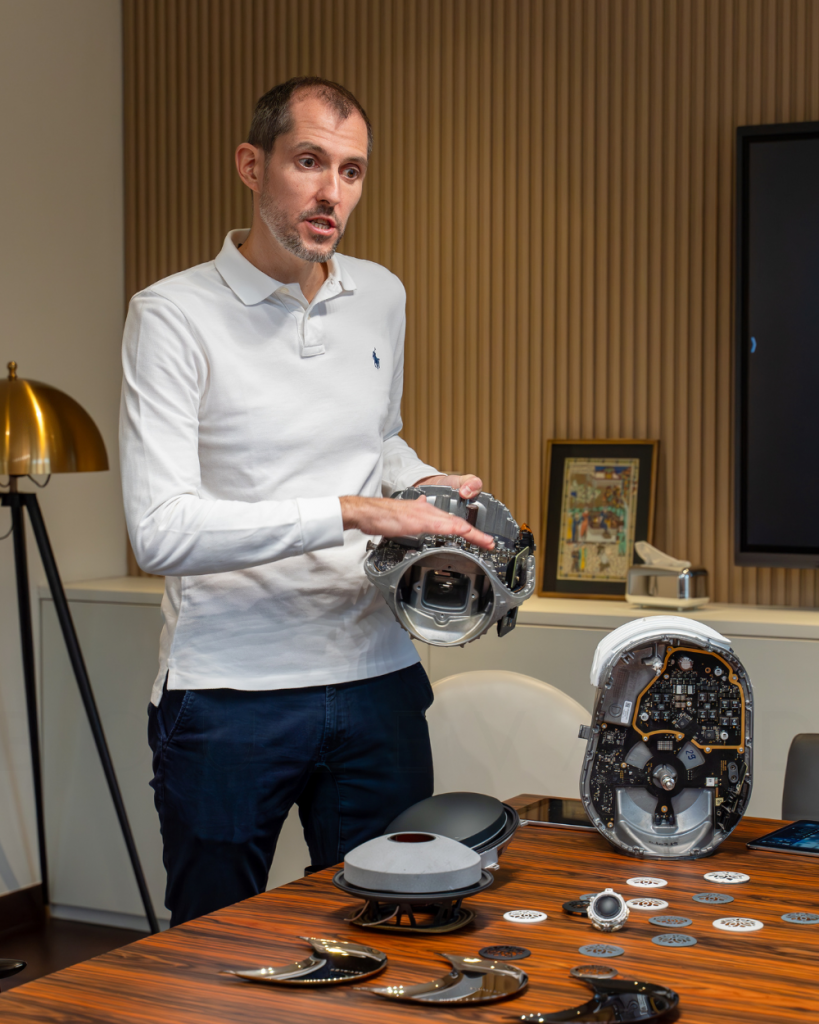
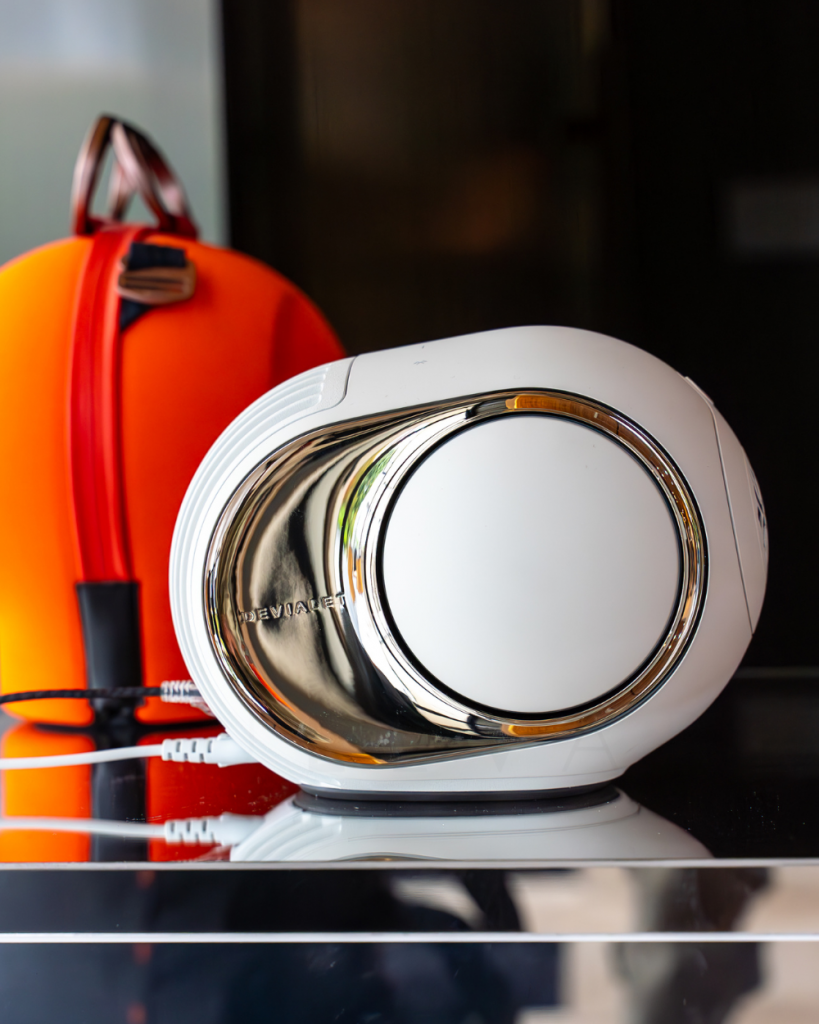
Left: Jean-Loup Afresne, Chief Product & Technical Officer at Devialet. Right: The Phantom Ultimate in Gold Leaf. Top: The Phantom Ultimate in Deep Forest.
Boulevard: I wanted to start with the evolution of the Phantom line. Can you take us back to the beginning—when and how did Phantom come about, and how did it evolve to the Phantom Ultimate?
Jean-Loup Afresne: The first idea around Phantom came in 2011. It took two years, from 2011 to 2013, just to define the concept—because we knew we wanted to make an integrated, all-in-one audiophile system that would allow everyone to enjoy high-quality sound at home, without relying on old-fashioned systems made of separate components.
At that time, we didn’t yet know what shape or size it would take. So it took two years to define this spherical shape, with the woofers on the sides, the midrange and tweeter at the front for mid-high frequencies, the electronics in the aluminium central body, and the heatsink at the rear. After that, it took another two or three years to design and manufacture the product.
We launched it in 2015. Since then, the product has had almost no evolution—so 10 years later, it was important for us to relaunch it with improved acoustics. We enhanced the digital signal processing, amplifiers, power supply unit, and all the transducers. Everything has been improved to achieve even less distortion, a higher frequency range up to 35 kilohertz, and a design that feels more luxury-oriented and less like a lifestyle electronic.
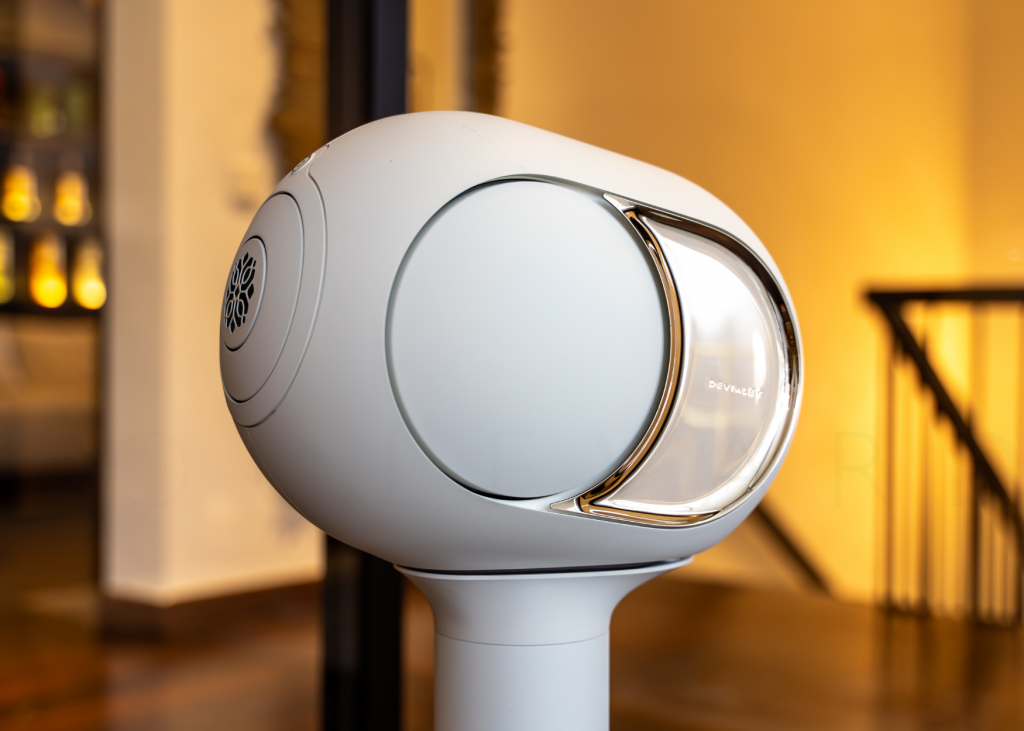
The Phantom Ultimate in White Pearl.
Blvd: How long did it take to create the Ultimate? When did you start thinking about it? There are 250 patents involved as well.
Afresne: Almost 10 years—but it began as a hidden project. We didn’t have the full resources on it at the start, just a small team thinking about how to improve the original. Some of the technical challenges were very high, so it took a long time to define what could be improved and how. But the past three to four years have been very focused on developing the new version.
The most complex thing wasn’t one single element—it was the sum of changes. A lot of things evolved in parallel, which was challenging. The woofer’s thickness was one of the hardest aspects. The previous woofer was 30 per cent larger; now it’s much thinner but performs even better. Usually, an eight-inch woofer is two or three times thicker, but we managed to make ours more compact without compromising performance.
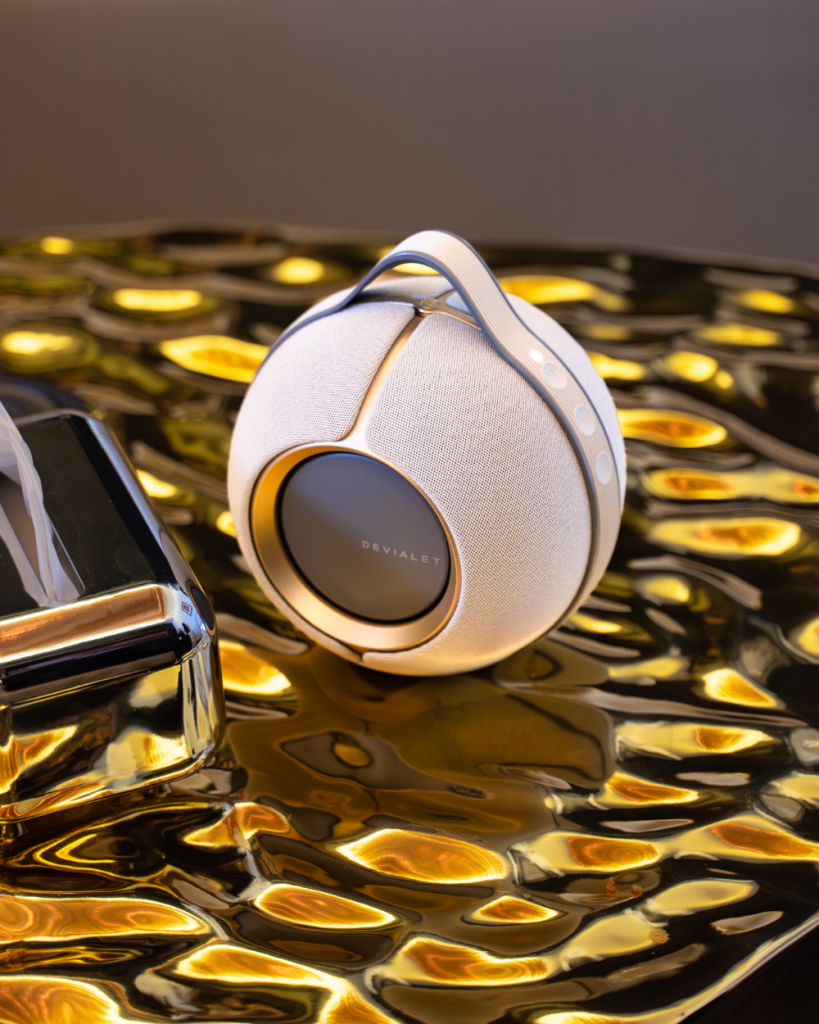
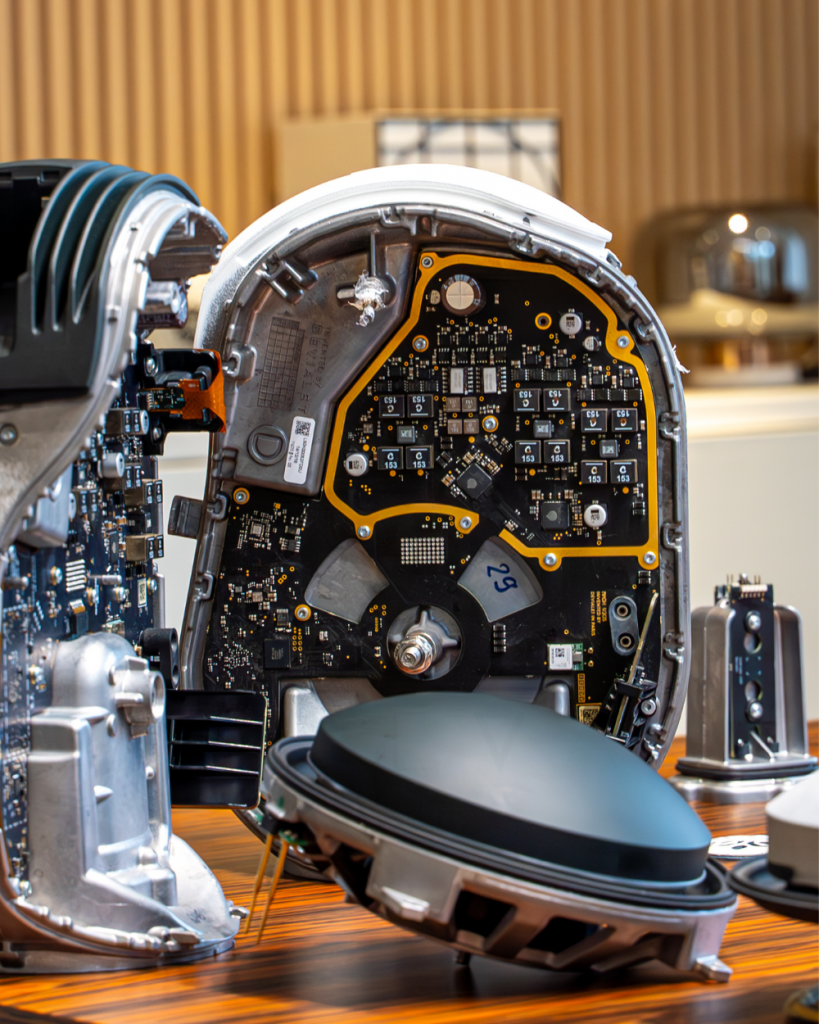
Left: The Devialet Mania Opéra de Paris in Gold. Right: The innerworkings of the Phantom Ultimate.
Blvd: Could you tell me more about Devialet’s relationship with Opéra de Paris?
Afresne: It’s a very special partnership. Of course, Opéra de Paris is deeply linked to music, which made it a natural connection for us—and they are based in Paris, like us. All our products have an Opéra de Paris edition in the higher range, and we also have our own boutique inside the Opéra.
We are the only brand in the world to have a retail space there. Many brands—even Apple—have asked, and they said no to everyone except us, because we make instruments for music. Recently, for the 150th anniversary of the Opéra de Paris, we launched a new Mania version in the Opéra’s signature red, inspired by the seats. Usually, our Opéra line is white and gold, but this one celebrates that deep Parisian red.
Our French identity is very much part of what we do. We don’t follow trends. We know our purpose: to bring exceptional audio experiences to people’s homes. We don’t rely on market or customer surveys, because they lead everyone to the same result. We prefer to follow our own direction.
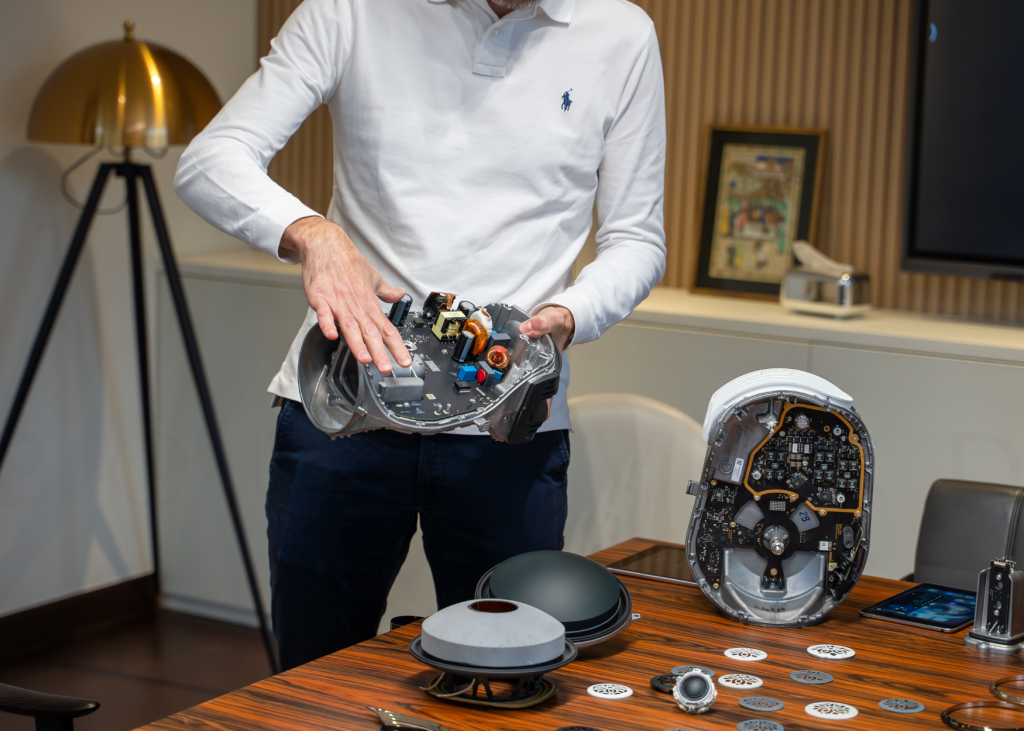
The Phantom Ultimate features an upgraded system with 250 patents, including a thinner woofer.
Boulevard: Where does that sense of inspiration come from, this drive to do things differently?
Afresne: It comes from believing that it’s possible to make what we dream of. We don’t start by asking whether something is possible—we define the experience we want to create, without limits.
When we first wanted to make a 12-litre sphere that could produce the sound of a system ten times its size, many speaker manufacturers said it would never work. But as long as there’s no scientific proof that it’s impossible, we believe it can be done so we pursue it. We only stop when physics says no.
“As long as there’s no scientific proof that it’s impossible, we believe it can be done so we pursue it. We only stop when physics says no.”
Boulevard: I remember hearing the Phantom for the first time about ten years ago at Marina Bay Sands, in that glass room. It wasn’t just an audio experience—it felt emotional, even visceral. Is that intentional?
Afresne: Yes. Our goal is not to create a product that plays background music. We believe in the power of sound—how music can truly impact people’s lives. Devialet is built on that belief: that emotion is the essence of sound.
Even our logo represents that—it’s a teardrop, symbolising the emotion you can feel when you listen to music. When we design prototypes, we always check for that emotion. If we don’t feel it, something is wrong.
We believe music is more powerful than pictures or video. It helps people reconnect with themselves. Listening to music—when done with the right content and quality—can be almost spiritual. There’s no “better” music; each person has their own taste. Our products are designed to reproduce every kind of music—classical, electronic, jazz, rock—so people can connect deeply with the artist and the emotion behind it.
Blvd: What’s exciting you right now? What innovations are keeping you up at night—or waking you up in the morning?
Afresne: I strongly believe we can create audio experiences in the future that have never been done before. That’s what keeps me motivated—the idea that the next decade can bring sound experiences unlike anything we know today. Let’s meet again in 10 years.
Read next:
